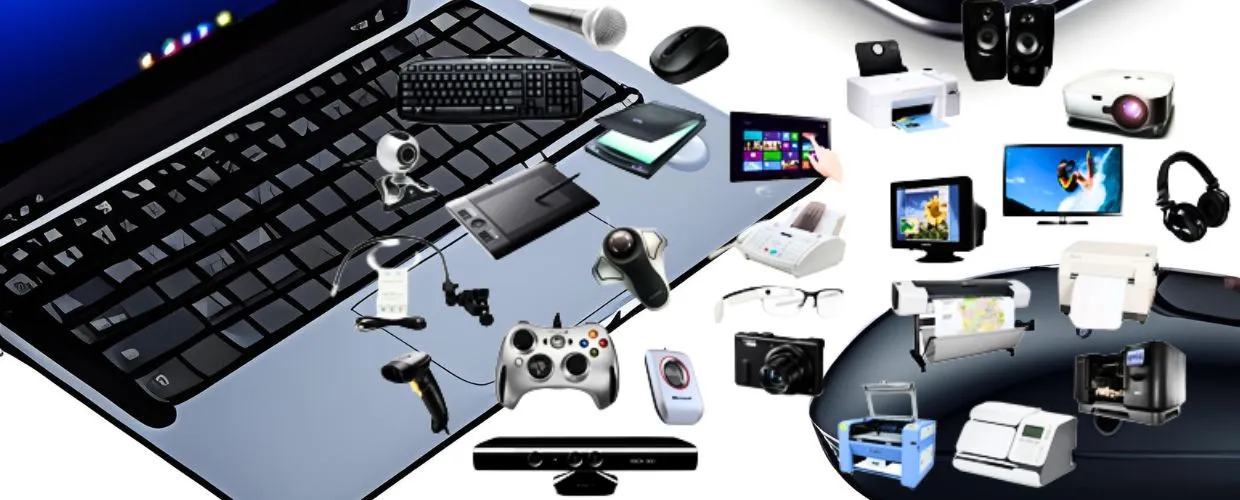In the rapidly evolving digital landscape, where human-computer interaction is integral to everyday tasks, input devices facilitate communication between users and electronic systems. In this article, we will explore the significance of input devices, examine their key features and functionalities, delve into their applications across various domains, and highlight the benefits they offer in empowering users and businesses.
What are Input Devices?
Input devices are critical components of any computing system, allowing users to input data, commands, and instructions into computers and other digital devices. They enable seamless interaction with digital systems, bridging human users and the digital world. The devices are essential components of any computing system. They facilitate communication between humans and digital systems by allowing users to provide input through data, commands, or instructions. These devices serve as the bridge between human users and the digital world, enabling users to control the behavior of electronic systems and initiate a range of actions and processes.
Input devices come in many forms, including keyboards, mice, touch screens, and voice recognition technology. Each device captures user input and transmits it to the underlying software, where it is processed and used to initiate task execution and enable seamless interaction with digital systems. These devices are crucial for allowing users to control and interact with the digital world and play a key role in the functionality and usability of modern computing systems.
Key Features and Functionalities of Input Devices
Input devices come in various forms and technologies, each designed to capture specific types of user input. Let’s explore some of their key features.
Text and Numeric Input
Devices such as keyboards and keypads allow users to input alphanumeric characters, numbers, and special symbols. Keyboards are commonly used in personal computers, laptops, and mobile devices, while keypads are prevalent in ATMs, calculators, and POS systems. These devices enable users to enter text, commands, and numerical data efficiently.
Pointing and Gesture Recognition
Pointing devices, including mice and touchpads, enable users to navigate graphical interfaces, control the movement of cursors, and select objects on screens. Additionally, touchscreens and gesture recognition devices, such as touch-sensitive displays and motion sensors, allow users to interact directly with digital content through touch, gestures, or hand movements.
Scanning and Imaging
Devices like scanners and digital cameras capture images, documents, and other physical objects and convert them into digital formats. Scanners enable digitizing printed materials, while digital cameras capture images and videos. These input devices facilitate the integration of physical content into digital systems for editing, storage, and sharing.
Voice and Speech Recognition
Voice and speech recognition devices, such as microphones and voice input systems, enable users to provide input through spoken words. These devices convert audio signals into text or execute specific commands based on voice instructions. Voice recognition technology has gained prominence in virtual assistants, voice-controlled systems, and dictation software, offering hands-free interaction.
Sensors and Biometric Input
Sensors and biometric devices capture input based on physical attributes or environmental factors. Examples include fingerprint scanners, facial recognition systems, motion sensors, and GPS receivers. These devices provide secure and personalized input, enhancing user authentication, location tracking, and environmental sensing capabilities.
Applications of Input Devices
Input devices have various applications across various domains, enabling users to interact effectively with digital systems. Let’s explore some common applications.
Personal Computing
Input devices like keyboards, mice, touchpads, and webcams are essential for personal computing tasks. They enable users to input text, navigate graphical interfaces, control applications, and communicate through video conferencing or live streaming.
Gaming and Entertainment
Input systems are crucial in gaming and entertainment, offering immersive and interactive experiences. Game controllers, motion sensors, virtual reality (VR) controllers, and gaming keyboards provide intuitive input methods, enabling users to control characters, interact with virtual worlds, and enjoy multimedia content.
Point-of-Sale and Retail
In retail, input devices such as barcode scanners, touchscreens, and card readers facilitate efficient checkout processes, inventory management, and customer interaction. These devices streamline transactions, enable quick product identification, and support digital payment.
Industrial and Automation Systems
The devices find applications in industrial and automation systems, where they enable operators to input commands, configure settings, and monitor processes. Industrial keyboards, touch panels, sensors, and control interfaces are critical in controlling machinery, tracking data, and ensuring operational efficiency.
Accessibility and Assistive Technology
Input systems are vital in accessibility and assistive technology, empowering individuals with disabilities to interact with digital systems. Specialized input devices like alternative keyboards, eye-tracking systems, sip-and-puff devices, and switch interfaces enable individuals with motor impairments or other disabilities to access computers and assistive applications effectively.
Benefits of Input Devices
Input devices offer numerous benefits that enhance user experiences, improve productivity, and foster innovation. Let’s explore some of these benefits:
User-Friendly Interaction
The devices provide intuitive and user-friendly interaction methods, enabling users to input data and control digital systems easily. The familiarity and convenience of input devices like keyboards, mice, and touchscreens make computing tasks more accessible, even for novice users.
Increased Efficiency and Productivity
Efficient input devices, such as keyboards, scanners, and touchscreens, enhance productivity by allowing users to input data rapidly and accurately. These devices streamline data entry, facilitate quick document scanning, and expedite interaction with digital content, improving efficiency and time savings.
Enhanced Creativity and Expression
Input devices like graphic tablets, styluses, and touch-sensitive displays enable users to express their creativity digitally. Artists, designers, and content creators can sketch, draw, or paint directly on digital surfaces, replicating the experience of traditional art mediums while leveraging the advantages of digital tools.
Accessibility and Inclusion
Specialized input devices for individuals with disabilities contribute to accessibility and inclusion. These devices empower users with motor impairments, visual impairments, or communication difficulties to access and interact with digital systems, fostering equal opportunities and participation.
Driving Innovation
Innovative input devices, such as voice recognition systems, gesture recognition devices, and biometric sensors, drive innovation and open new possibilities in human-computer interaction. These devices enable hands-free control, intuitive gestures, and personalized input, paving the way for advanced technologies and futuristic applications.
Conclusion
Input devices are indispensable in bridging the gap between users and digital systems, facilitating seamless communication and interaction. With their various features, functionalities, and applications, the devices empower users across industries, from personal computing to gaming, retail, industrial automation, and accessibility. By harnessing the capabilities of input systems, individuals and businesses can unleash their creativity, improve productivity, and embrace the transformative power of digital technology. As technology advances, input devices will play a crucial role in shaping the future of human-computer interaction, making it more intuitive, inclusive, and efficient.










